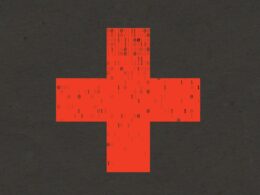What is the message?
In a recent editorial published in The Lancet, David Watkins and colleagues examine strategies for nations to achieve the Sustainable Development Goal (SDG) 3.4 target of reducing premature mortality from non-communicable diseases (NCDs) by one-third by 2030.
Despite the setbacks caused by the COVID-19 pandemic, Watkins and colleagues present evidence-based interventions that could significantly reduce NCD death rates and propose practical steps for countries to address the mounting burden of NCDs.

EXECUTIVE SUMMARY
What are the key points?
Evidence-Based Interventions: Watkins and colleagues identify 21 interventions, supported by the Disease Control Priorities Project and the World Health Organization (WHO), that could rapidly reduce NCD death rates worldwide. These interventions are feasible for implementation across countries at any income level.
Cost-Benefit Analysis: Realistic implementation of these interventions would require an additional annual investment of US$18 billion but would yield a remarkable 19:1 return on investment, preventing 39 million premature NCD-related deaths.
Impact of COVID-19: The COVID-19 pandemic disrupted NCD care globally, resulting in declines in screening and treatment. The editorial underscores the urgent need to address the backlog of NCD diagnoses and treatments exacerbated by the pandemic.
Focus on Morbidity: While mortality remains a key concern, the editorial highlights the importance of addressing the morbidity associated with NCDs and calls for a shift in focus towards improving access to healthcare and resources for NCD management.
Structural Reforms: Structural barriers hindering patient engagement and equitable access to NCD care must be dismantled. Organizations are urged to advocate for policies that prioritize NCD care and address the commercial determinants of health.
What are the key examples?
The COVID-19 pandemic led to significant disruptions in NCD care, including declines in cancer registrations and delays in curative cancer surgeries.
The Lancet NCDI Poverty Commission highlighted the need to prioritize resources for the poor to access healthcare and proper nutrition.
What are the key statistics?
Implementation of evidence-based interventions to address NCDs would require an additional annual investment of US$18 billion but could prevent 39 million premature deaths, yielding a 19:1 return on investment.
Currently, 47% of the global population lacks access to diagnostics, highlighting the need for expanded diagnostic capacity to address NCDs effectively.
Conclusion
Addressing the growing burden of NCDs requires a multifaceted approach that encompasses evidence-based interventions, structural reforms, and increased access to healthcare.
The COVID-19 pandemic underscored the importance of resilient health systems capable of managing NCDs in crisis situations. As nations strive to achieve SDG targets, radical reforms in health systems focused on NCDs are imperative, with a renewed emphasis on universal health coverage and primary healthcare.
The upcoming International Strategic Dialogue on NCDs and the SDGs presents an opportunity for global leaders to prioritize NCD care and drive meaningful reforms in healthcare systems worldwide.
DEEP DIVE

Non-communicable diseases (NCDs): what now?
The Lancet
Editorial
March 26, 2022
In The Lancet, David Watkins and colleagues explore how countries can get back on track to reach the Sustainable Development Goal (SDG) 3.4 target of reducing premature mortality from
- cancers,
- cardiovascular diseases,
- chronic respiratory diseases, and
- diabetes
by a third by 2030.
Drawing on the Disease Control Priorities Project and what WHO considers the “best buys”, they synthesise the evidence for 21 interventions that can rapidly reduce non-communicable disease (NCD) death rates and be implemented in countries at any income level.
Drawing on the Disease Control Priorities Project and what WHO considers the “best buys”, they synthesise the evidence for 21 interventions that can rapidly reduce non-communicable disease (NCD) death rates and be implemented in countries at any income level.
Under realistic conditions, Watkins and colleagues conclude that the world could achieve the SDG 3.4 target by spending an additional US$18 billion per year.
The economic benefits of this investment would outweigh the costs 19:1.
In the process, 39 million premature deaths from NCDs could be prevented — a huge health and economic dividend for a small outlay.
… the world could achieve the SDG 3.4 target by spending an additional US$18 billion per year.
The economic benefits of this investment would outweigh the costs 19:1.
In the process, 39 million premature deaths from NCDs could be prevented
Some countries are going beyond these recommendations and implementing extensive suites of interventions.
Many others might not have robust enough health systems or resources for ambitious, comprehensive NCD action plans, but the Health Policy by Watkins and colleagues provides a framework to begin making further gains on NCDs. And a practical way to emerge from the impact of COVID-19.
… the Health Policy by Watkins and colleagues provides a framework to begin making further gains on NCDs. And a practical way to emerge from the impact of COVID-19.
For the impact has been enormous. An assessment by WHO early in the pandemic found that 94% of countries reported that all or some of the staff working on NCDs in health ministries had been reassigned to COVID-19.
As intermittent lockdowns and high infection rates compounded the pressure on health-care systems, there were huge declines in the screening and treatment of NCDs.
Cancer registration and screening fell rapidly in most countries, even in those with low rates of COVID-19, such as New Zealand, where cancer registrations decreased by around 40%.
As intermittent lockdowns and high infection rates compounded the pressure on health-care systems, there were huge declines in the screening and treatment of NCDs.
Cancer registration and screening fell rapidly in most countries, even in those with low rates of COVID-19, such as New Zealand, where cancer registrations decreased by around 40%.
The result has been a screening deficit of millions of people. A prospective cohort study across 61 countries, which enrolled more than 20 000 patients, showed that one in seven patients who were in regions with full lockdowns had delays to their curative cancer surgery.
NCDs are difficult and complex conditions to manage at the best of times. Now, with millions of people around the world on waiting lists for diagnosis and treatment, the scale of the problem is daunting indeed.
Following the same course as before the pandemic and expecting a different result would be foolish. So: what now for NCDs?
To date, too much of the narrative around NCDs has focused on mortality. But morbidity — the lived burden on billions of people — can be a powerful lever for action.
The Lancet NCDI Poverty Commission declared that not enough attention is paid to “addressing the inadequate resources available for the poor to be properly nourished, live safely, and to access health care”. NCDs remain a neglected development issue.
To date, too much of the narrative around NCDs has focused on mortality. But morbidity — the lived burden on billions of people — can be a powerful lever for action
Organisations should attempt to break down structural barriers that inhibit meaningful patient engagement, expand the advocacy community, fight against the inequitable focus of money, expertise, and attention on high-income countries, and push for conversations and decisions on NCDs to be driven by those populations that suffer the most from them (ie, people in low-income and middle-income countries).
Attending to the commercial determinants of health and the proper regulation of industry to create health-promoting environments must be a priority.
Organisations should attempt to break down structural barriers…
Attending to the commercial determinants of health and the proper regulation of industry to create health-promoting environments must be a priority.
More importantly, resilient health systems must be created with sufficient capacity for NCD care in a pandemic and post-pandemic world.
Information should be the backbone of this reimagination — in particular, expanded diagnostic capacity.
The Lancet Commission on diagnostics found that 47% of the global population has little to no access to diagnostics.
Accurate information on prevalence of disease — as well as on the availability of resources such as treatments and access to care — will provide the basis for countries to make strategic changes to health systems.
Information should be the backbone of this reimagination — in particular, expanded diagnostic capacity … 47% of the global population has little to no access to diagnostics.
Successfully reducing the burden of NCDs is tied closely to the quality of universal health coverage and primary health care.
To make population-level changes, whole health systems must be reoriented, and cross-cutting care models employed.
On April 12, an International Strategic Dialogue on NCDs and the SDGs will be hosted by the president of Ghana, the prime minister of Norway, and the director-general of WHO.
It must recognise that now is the time for the radical reform of health systems positioned around NCDs.
Successfully reducing the burden of NCDs is tied closely to the quality of universal health coverage and primary health care.
It must recognise that now is the time for the radical reform of health systems positioned around NCDs.
Originally published at https://www.thelancet.com.
TAGS: NCDs, NCDs Strategy; Pandemic Resilient Health Systems; Databases; Information Systems; Radical Health Reform; Data Driven Health Care; Analytics Informed Health Care; Digital Health Systems; Digital Health Platform
NCD Countdown 2030 collaborators
David A Watkins (MD; Division of General Internal Medicine, Department of Medicine, and Department of Global Health, University of Washington, Seattle, WA, USA), William T Msemburi* (PhD; Division of Data, Analytics, and Delivery for Impact, WHO, Geneva, Switzerland), Sarah J Pickersgill* (MPH; Department of Global Health, University of Washington, Seattle, WA, USA), Yoshito Kawakatsu (MPH; Department of Global Health, University of Washington, Seattle, WA, USA), Adrian Gheorghe (PhD; School of Public Health, Imperial College London, London, UK), Katie Dain (MSc; NCD Alliance, London, UK), Kjell Arne Johansson (PhD; Department of Global Public Health and Primary Care, University of Bergen, Bergen, Norway; Department of Addiction Medicine, Haukeland University Hospital, Bergen, Norway), Sanaa Said (MD; School of Health and Medical Sciences, State University of Zanzibar, Zanzibar, Tanzania), Nina Renshaw (MA; NCD Alliance, Geneva, Switzerland), Mieraf T Tolla (PhD; Addis Centre for Ethics and Priority Setting, Addis Ababa University, Addis Ababa, Ethiopia), Pakwanja D Twea (MSc; Department of Planning and Policy Development, Ministry of Health, Lilongwe, Malawi), Cherian Varghese (MD; Department of Noncommunicable diseases, World Health Organization, Geneva, Switzerland), Prof Kalipso Chalkidou (PhD; School of Public Health, Imperial College London, London, UK), Prof Majid Ezzati (FMedSci; School of Public Health, Imperial College London, London, UK; Regional Institute for Population Studies, University of Ghana, Legon, Ghana), Prof Ole F Norheim (PhD; Department of Global Public Health and Primary Care, University of Bergen, Bergen, Norway; Department of Global Health and Population, Harvard T.H. Chan School of Public Health, Boston, MA, USA). *Contributed equally.
Contributors DAW designed the study with input from OFN, KC, and ME. WTM, SJP, YK, and AG collected and analysed the data and developed the tables, figures, and appendix. All authors interpreted the data. DAW drafted the manuscript. All authors revised the draft manuscript critically for important intellectual content. The views expressed in this report are solely the responsibility of the authors and they do not necessarily reflect the views, decisions, or policies of the institutions with which they are affiliated.











